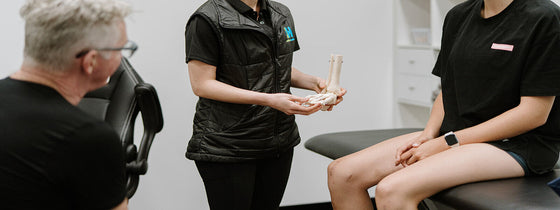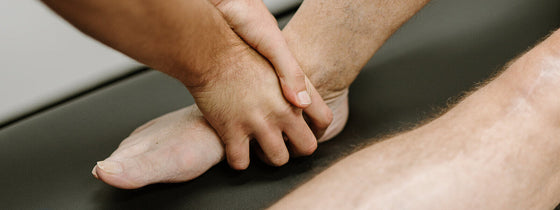At OHL, we believe that movement is key! The appropriate strength and conditioning program can improve both performance, and overall quality of life. When it comes to designing an effective strength and conditioning program, there are three fundamental movement patterns that we recommend; squats, deadlifts, and calf raises.
Whether you're an elite athlete, weekend warrior, or just looking to move better as you age — these movements translate into everyday life.
The squat is one of the most functional exercises you can perform. It mimics everyday actions like sitting, standing, climbing stairs, or picking something up off the floor. But squats go beyond daily tasks—they enhance hip, knee, and ankle mobility, strengthen your quads, glutes, and hamstrings, and improve posture and balance.
A well-performed squat builds the muscular foundation for walking, jumping, landing, and absorbing force. It's also highly modifiable, meaning we can adapt it to suit each and every individual—from bodyweight squats to weighted squats to explosive variations.
Deadlifts train some of the most important muscle groups; the glutes, hamstrings, lower back, and core, to support everyday tasks, prevent injuries, and enhance athletic performance. These muscles are often underused or weak, especially in people with sedentary jobs or poor lifting habits.
What makes the deadlift so valuable is that it teaches you how to hinge at the hips and lift safely—a movement pattern that supports your lower back and prepares your body to handle everyday movements, like lifting kids, carrying groceries, or transferring loads at work.
By strengthening the posterior chain, deadlifts improve posture, reduce lower back pain, and enhance overall power and coordination.
Calf raises are often forgotten, but they play a critical role in both injury prevention and athletic performance. The calf complex—especially the soleus and gastrocnemius muscles—contributes to ankle stability, shock absorption, and power generation in activities like walking, running, jumping, and even balancing.
Weaker or undertrained calves are often associated with ankle sprains, achilles tendinopathy, shin splints, and/or poor ankle control. Incorporating calf raises into your program builds strength and endurance in this area, which helps reduce injury risk while improving movement efficiency.
Each of these exercises works multiple joints and muscle groups at once, making them "compound movements." That means you're training more than one area of the body at once—developing coordination, strength, and control in a way that translates to both sport and everyday life.
At OHL, we incorporate squats, deadlifts, and calf raises into individualised strength programs for clients of all ages and abilities. These exercises are adjusted based on your injury history, range of motion, level of strength, and goals—ensuring you're moving safely and effectively.
Our team of physiotherapists are here to help you train with purpose—whether you're just starting out or returning from injury. We'll assess your movement, guide you through proper technique, and build a personalised program around fundamental movement patterns like squats, deadlifts, and calf raises to help you move better, feel stronger, and perform at your best.
Book your strength assessment today with our experienced team.

If you're experiencing back or neck pain with neurological signs and symptoms, a thorough neurological examination is crucial for accurate assessment and effective treatment. In this Optimal Tip learn more about what we mean by completing a neurological exam!

A ganglion cyst is a fluid-filled swelling that typically forms over a joint or tendon sheath, causing discomfort and pain, especially when pressing against nerves or joints. Proper assessment and treatment, including physiotherapy, are essential for managing symptoms and improving function in the presence of a ganglion in your hand, foot, or wrist.

This blog discusses the mechanisms by which dry needling works and the differences from acupuncture.